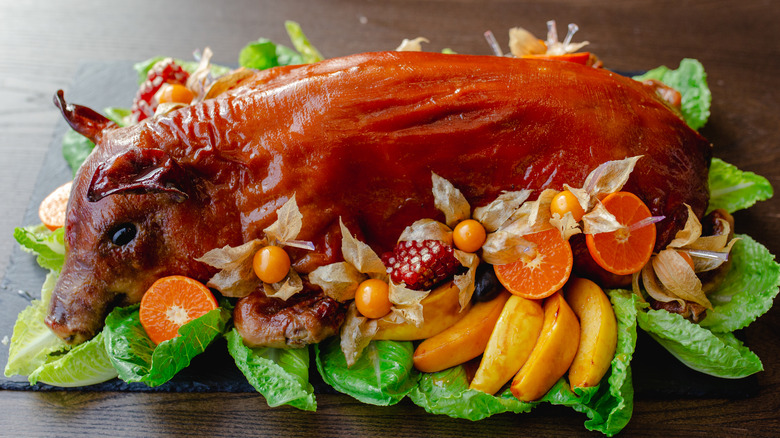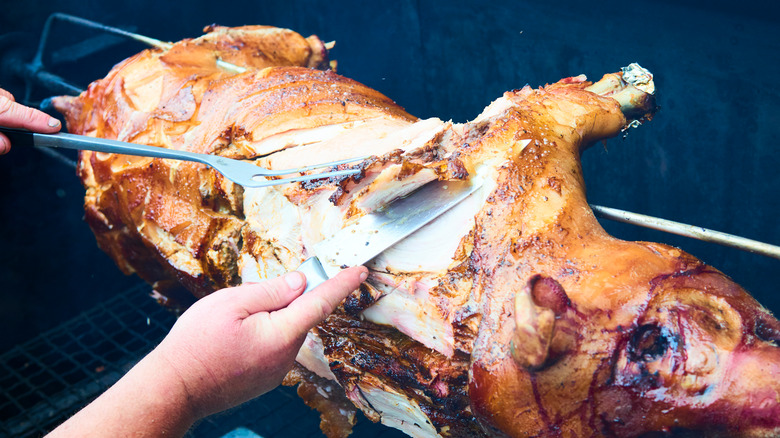Why It's Pretty Much Impossible To Overcook A Roast Suckling Pig
Simply hearing the name of this porcine feast conjures images of a roaring medieval hearth. Two servants stand on either end of a heavy iron rotisserie upon which are skewered pigs. They spin the rotisserie steadily as the hogs' skin browns and their fat drips with a sizzle onto the hot coals below. The final touch on the tableau comes as the swine are served on glittering silver platters, bright red apples wedged neatly between each of their mouths. While the suckling pig may seem something of an extravagance of a time long passed, roasting one yourself is among the easiest meals you could ever attempt to cook.
According to Serious Eats, there is such a wide margin of error when it comes to roasting a suckling hog you'd have to be downright determined to ruin it in order to even come close to a horrendous outcome, and even then you'd have trouble achieving your goal. Roasting the suckling pig is a long and cherished tradition that spans across cultures, including being the menu star at the oldest restaurant in the world in Madrid, Spain, according to Food Insider. Knowing that it is nearly impossible to get a suckling swine wrong should encourage you to have a hog roast of your own.
An involved, yet forgiving process
In complete fairness, roasting a suckling pig is an involved process. There's the sourcing of the hog, preferably from a good butcher, and then dressing it for roasting. Suckling pigs tend to range on the side of 20 pounds, which is just large enough to fit into a conventional oven, per The New York Times. A long roasting at a low oven temperature for several hours will ensure that classic juicy pork. Getting that gorgeously brown, crispy skin is a simple matter of raising the oven temperature and roasting it a few minutes more.
However, it's the flesh beneath the skin that makes the roasting process so forgiving. By definition, a suckling pig is one that, at the time of its butchering, had yet to be weaned from its mother. The flesh of the young hog, therefore, has not had time to develop its muscle fibers, making it tender, moist, and brimming with juices. That factor, along with the high amount of collagen found in the flesh, make the suckling pig nearly impossible to overcook as the juices from the flesh essentially baste themselves during the slow roasting (via Grill Master University and Serious Eats). So while it may seem like a daunting task, roasting this type of swine is likely one of the most forgiving processes you'll encounter in cooking.

